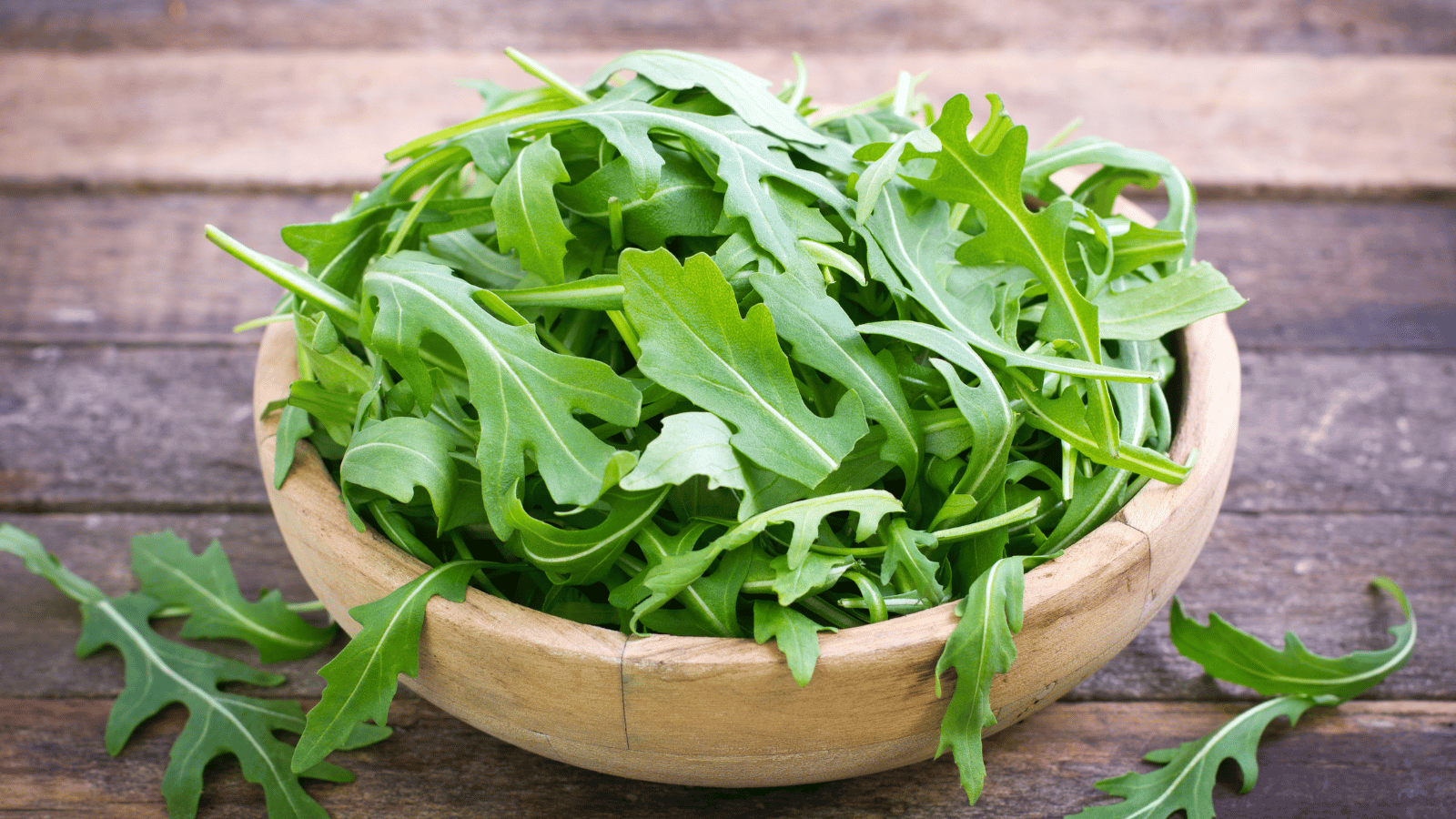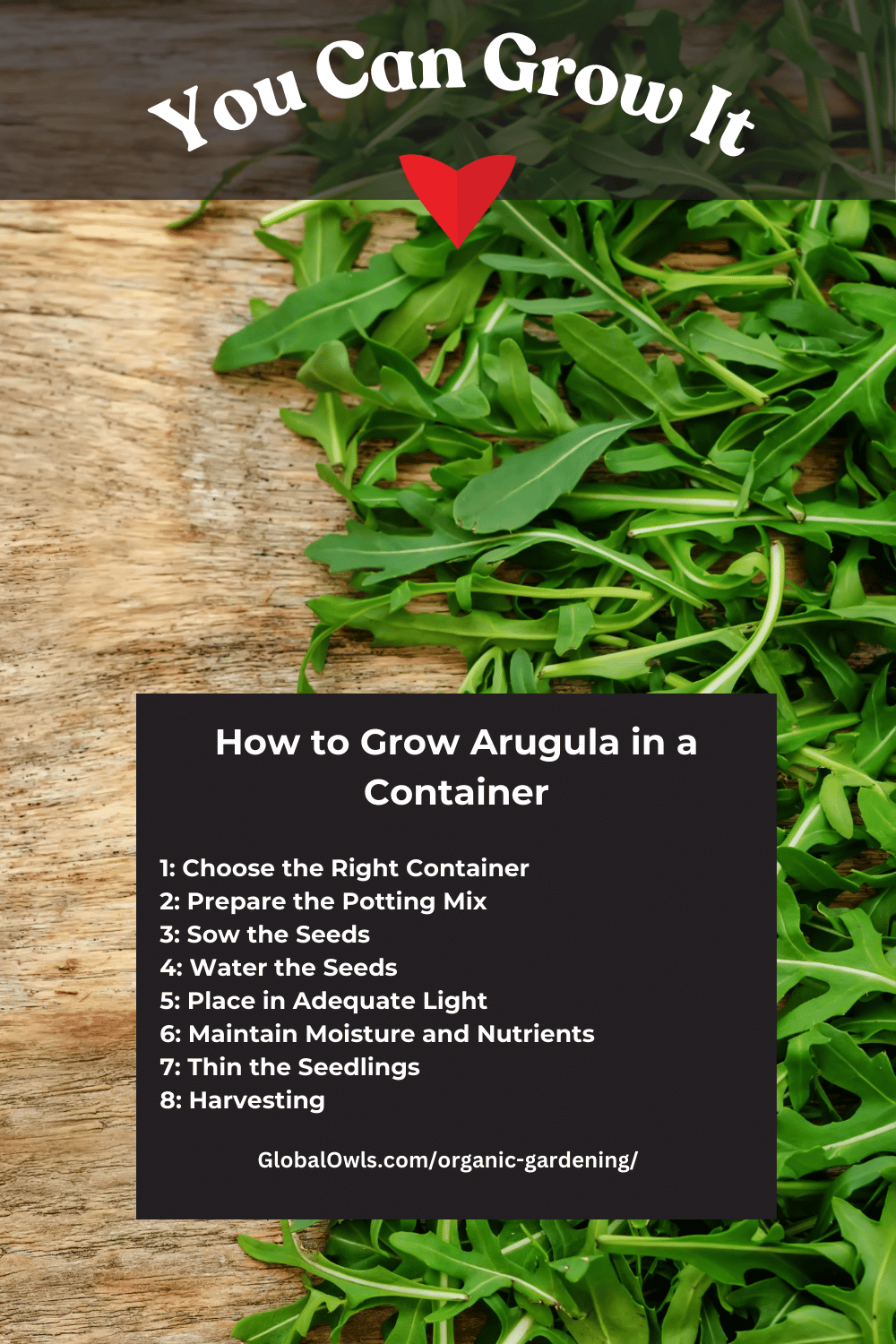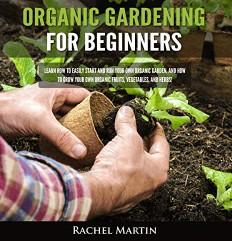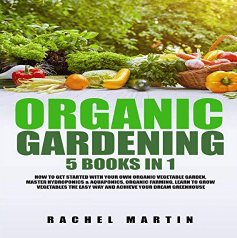How to Grow Arugula – Complete Guide. Grow & Care
Arugula, also known as rocket, is a vibrant leafy green that brings a peppery punch to any dish. It’s favored not only for its flavor but also for its nutritional benefits, making it a popular choice among gardeners and chefs alike. Whether you’re looking to spice up your salads, enhance your gourmet pizzas, or simply add more greens to your diet, growing arugula offers a rewarding and straightforward gardening experience.
This guide will walk you through the essentials of growing arugula from seed to harvest, covering everything from container gardening to indoor growing techniques.
Chapters
- What is Arugula?
- Is Arugula Difficult to Grow?
- How to Grow Arugula in a Container
- How to Grow Arugula Indoors
- Arugula Soil, Planting, and Care
- Arugula Harvest and Storage
- Does Arugula Grow Back After Picking?
- How to Use Arugula
- Learn everything you need to know about Organic Gardening from Pros
- Lineup of Top Organic Gardening Audio Books
What is Arugula?

Is Arugula Difficult to Grow?
Arugula is considered one of the easiest leafy greens to grow, making it a great choice for beginner gardeners. It thrives in cool weather but can also tolerate some warmth, making it suitable for both spring and autumn cultivation.
Its fast growth cycle allows for quick harvesting, which is rewarding for new and experienced gardeners alike. As you can see in the video below, if you don’t harvest your arugula in time, you can overtake your garden within a couple of weeks when in prime season.
How to Grow Arugula in a Container
Growing arugula in a container is an excellent option for those with limited garden space. Select a container that is at least 6-8 inches deep and has good drainage. Fill the container with a well-draining potting mix and sow the seeds thinly, covering them lightly with soil. Place the container in a location that receives at least 4-6 hours of sunlight daily. Water regularly, keeping the soil moist but not waterlogged.

Growing arugula in a container is a simple and effective way to enjoy fresh greens even if you’re short on garden space. Here’s a step-by-step guide on how to successfully grow arugula in a container:
Step 1: Choose the Right Container
Select a container that is at least 6-8 inches deep to accommodate the roots of the arugula plants. Ensure the container has adequate drainage holes to prevent waterlogging, which could harm the plant roots. Materials like clay, fabric pots, or recycled plastic are all suitable choices.
Step 2: Prepare the Potting Mix
Use a high-quality potting mix that drains well yet retains enough moisture to keep the roots hydrated. You can enhance regular potting soil with compost or a slow-release organic fertilizer to provide additional nutrients. Fill the container with the potting mix, leaving about an inch of space from the top to facilitate watering.
Step 3: Sow the Seeds
Sprinkle arugula seeds lightly over the surface of the soil. Try to distribute them evenly to avoid overcrowding. Cover the seeds with a thin layer of soil—about 1/4 inch deep. Gently pat the soil to ensure contact between the seeds and the soil, which helps with germination.
Step 4: Water the Seeds
After planting, water the seeds gently but thoroughly to moisten the soil without displacing the seeds. Use a watering can with a fine rose to achieve even and gentle watering. The goal is to keep the soil moist but not soggy.
Step 5: Place in Adequate Light
Position the container in a spot that receives at least 4-6 hours of direct sunlight daily. Arugula grows best in full sun but can tolerate partial shade, especially in warmer climates where afternoon shade can prevent the leaves from wilting.
Step 6: Maintain Moisture and Nutrients
Keep the soil consistently moist throughout the growth period. Arugula needs water to thrive but dislikes waterlogged conditions. If the top inch of soil feels dry, it’s time to water. As the arugula grows, you may apply a liquid fertilizer every few weeks to support leaf production, especially if the initial potting mix was not very rich.
Step 7: Thin the Seedlings
Once the seedlings are a few inches tall, thin them to about 3 inches apart. This spacing allows each plant enough room to grow and reduces competition for nutrients and light. The thinnings are edible and can be used as baby greens in salads.
Step 8: Harvesting
Begin to harvest your arugula when the leaves are big enough to eat, typically when they are about 2-3 inches long. Cut the outer leaves first, allowing the inner leaves to continue growing. This cut-and-come-again approach can extend the harvest period.
By following these steps, you can grow arugula in a container efficiently, enjoying fresh, peppery greens right from your balcony, patio, or windowsill.
How to Grow Arugula Indoors
For planting Arugula Indoors, you can follow many of the same steps as you would when growing arugula in a container (steps shown above).
To grow arugula indoors, start by selecting a sunny windowsill or use grow lights to ensure the plants receive enough light. Use shallow trays or pots with good drainage and a high-quality potting mix. Sow the seeds sparingly and cover lightly with soil. Keep the soil consistently moist and thin out the seedlings as they grow to avoid overcrowding. Arugula grown indoors can be harvested just as easily as outdoor plants.
Arugula Soil, Planting, and Care
Arugula prefers well-drained soil rich in organic matter. It thrives in a slightly acidic to neutral pH range (6.0-7.0). Sow the seeds directly into the soil about ¼ inch deep and 1 inch apart in rows spaced about 6 inches apart. Thin seedlings to about 3 inches apart once they have a few true leaves. Water regularly to keep the soil evenly moist and add a layer of mulch to retain soil moisture and suppress weeds. Fertilize with a balanced organic fertilizer about three weeks after planting.
Arugula Harvest and Storage
Begin harvesting arugula leaves as soon as they appear large enough to eat, typically 4-6 weeks after sowing. Cut the outer leaves first, allowing the inner leaves to mature. For a continuous supply, sow new seeds every 2-3 weeks. Store harvested arugula in the refrigerator wrapped loosely in a damp paper towel and placed in a plastic bag; it should last for about a week.
Does Arugula Grow Back After Picking?
Yes, arugula can grow back after picking if the plant is not harvested too aggressively. Leave enough leaves to allow the plant to photosynthesize and continue growing. With proper care, arugula plants can be cut several times before they need replanting. Here’s a video of how we harvest lettuce without pulling out the entire plant. The same can be done for Arugula, kale, and other leafy greens.
How to Use Arugula
Arugula can be used in a variety of dishes. Its peppery leaves are perfect in salads, either as the main green or mixed with other lettuces. Arugula also makes a flavorful addition to sandwiches, pizzas, and pastas. It can be lightly sautéed as a side dish or used as an edible garnish to add spice and color to meals.
Conclusion
Growing arugula is an enjoyable and fruitful endeavor that can transform your culinary creations with fresh, spicy flavors right from your garden.
With its rapid growth cycle and easy care requirements, arugula is an excellent choice for both novice and experienced gardeners. By following the straightforward steps outlined in this guide, you can ensure a bountiful harvest of this delicious green.
So, whether you’re sprinkling it onto your favorite dishes or enjoying it in a crisp salad, arugula is sure to add zest and vitality to your meals.
FAQ
What is the best time of year to plant arugula?
Arugula grows best in cooler temperatures. The optimal planting times are early spring or fall, depending on your local climate. In regions with mild winters, arugula can also be grown during winter.
What type of soil is ideal for growing arugula?
Arugula prefers well-drained soil with a pH between 6.0 and 7.0. Adding organic matter such as compost can help improve soil fertility and texture, enhancing arugula growth.
How much sunlight does arugula need?
Arugula grows well in full sun but can also tolerate partial shade, especially in hotter climates. Around 4-6 hours of sunlight per day is sufficient.
How often should I water arugula?
Water arugula regularly to keep the soil moist but not waterlogged. Depending on weather conditions, watering once every one to two days may be necessary, especially in dry, hot weather.
Does arugula need fertilizer?
While arugula doesn’t require much fertilizer, a light application of a balanced, organic fertilizer at planting time can help promote vigorous growth.
How do I protect arugula from pests?
Keep an eye out for common pests such as aphids and flea beetles. Using floating row covers can protect arugula from pests while allowing light and water to reach the plants. Neem oil and insecticidal soaps are effective organic options for pest control.
When is arugula ready to harvest?
Arugula can be harvested as soon as the leaves are large enough to eat, usually about 4 to 6 weeks after planting. For a continuous harvest, pick only the outer leaves, allowing the plant to keep producing new growth.
Can I grow arugula in containers?
Yes, arugula can be successfully grown in containers. Make sure to use pots with adequate drainage holes and choose a container that is at least 6 inches deep.
What are some common problems when growing arugula?
Common issues include bolting (going to seed) in warm temperatures and leaf yellowing. To prevent bolting, plant in cooler weather and ensure consistent moisture levels.
How can I use arugula in my cooking?
Arugula has a peppery flavor that makes it great in salads, sandwiches, and as a pizza topping. It can also be sautéed lightly or added to pasta dishes and soups.
What varieties of arugula are best for home gardening?
Popular varieties of arugula for home gardening include ‘Rocket’ for its classic peppery flavor, ‘Wild Arugula’ for a more intense taste, and ‘Astro’, which tends to be milder and more heat-tolerant.
How do I start arugula seeds indoors?
To start arugula seeds indoors, plant seeds in a seed-starting mix about ¼ inch deep. Keep the soil moist and in a warm location until germination, which typically occurs within 5-7 days. Transplant outdoors after the last frost.
Can arugula be grown hydroponically?
Yes, arugula can be grown hydroponically. This method allows for faster growth and control over nutrients. Arugula grows well in systems like nutrient film technique (NFT) or deep water culture (DWC).
What spacing is needed when planting arugula?
When planting arugula, space seeds or seedlings about 1 to 3 inches apart in rows. For larger leaves, increase spacing to 4-6 inches. This allows adequate room for growth and air circulation.
How do I prevent arugula from bolting?
To prevent arugula from bolting, plant it during cooler seasons, provide adequate water, and use shade covers in warmer weather to reduce heat stress.
Is arugula susceptible to any diseases?
Arugula can be susceptible to fungal diseases such as downy mildew and powdery mildew, especially in humid or overcrowded conditions. Ensure good air circulation and avoid overhead watering to minimize these risks.
Can I save seeds from arugula plants?
Yes, you can save seeds from arugula plants. Allow some of your plants to flower and produce seed pods. Once the pods are dry and brittle, collect them, extract the seeds, and store them in a cool, dry place for future planting.
How do I incorporate arugula into a crop rotation plan?
Include arugula in a crop rotation plan by growing it after heavy feeders like tomatoes or corn. This helps maintain soil health and reduces pest and disease issues.
What companion plants grow well with arugula?
Good companion plants for arugula include bush beans, carrots, celery, cucumbers, and onions. These companions can help deter pests and maximize use of space.
How can I ensure arugula grows well in summer?
To ensure arugula grows well in summer, choose heat-tolerant varieties and provide partial shade during the hottest part of the day. Keep the soil consistently moist and mulch around the plants to keep the roots cool.
How deep should the soil be for growing arugula?
Arugula does not require very deep soil due to its shallow root system. A soil depth of 6-8 inches is sufficient, making it ideal for raised beds and shallow containers.
What is the growth rate of arugula?
Arugula grows quickly, typically reaching harvest size within 4 to 6 weeks of planting. It can be harvested as early as 3 weeks if you’re picking baby leaves.
How can I manage excessive weed competition in arugula beds?
To manage weeds in arugula beds, mulch around the plants with organic material, such as straw or shredded leaves, to suppress weed growth. Regular weeding also helps prevent weeds from competing with arugula for nutrients and light.
What temperature range is optimal for arugula growth?
Arugula grows best in cooler temperatures, ideally between 45°F and 65°F (7°C to 18°C). High temperatures can cause the plant to bolt prematurely.
Can arugula be regrown from cuttings?
Arugula does not typically regrow from cuttings. However, if you leave the roots in the ground after harvesting, it may regrow new leaves for a second harvest.
How can arugula be used in companion planting to benefit other vegetables?
Arugula can act as a trap crop for flea beetles, which are also attracted to nightshades like tomatoes and peppers. Planting arugula nearby can help keep these pests away from more sensitive plants.
What should I do if my arugula starts to flower?
Once arugula starts to flower, the leaves may become more bitter. You can either harvest the entire plant and replant, or you can allow it to flower for seed collection. Some gardeners enjoy the flowers in salads or as garnishes.
Are there any special techniques for harvesting arugula to extend its production?
For extended production, practice cut-and-come-again harvesting, where you cut the outer leaves only, about one inch above the crown. This method encourages the plant to produce new leaves.
What are the nutritional benefits of arugula?
Arugula is low in calories and high in vitamins C and K. It also contains folate, calcium, and iron, making it a nutritious addition to any diet.
How do I winterize arugula in colder climates?
In colder climates, arugula can often survive mild winters with the protection of a cold frame or heavy mulch. In very cold regions, it can be grown in greenhouses or indoors under grow lights.
Learn everything you need to know about Organic Gardening from Pros
Start your Free Audible Trial and get access to the Top Gardening Audio Books for an entire month. Check it out!



